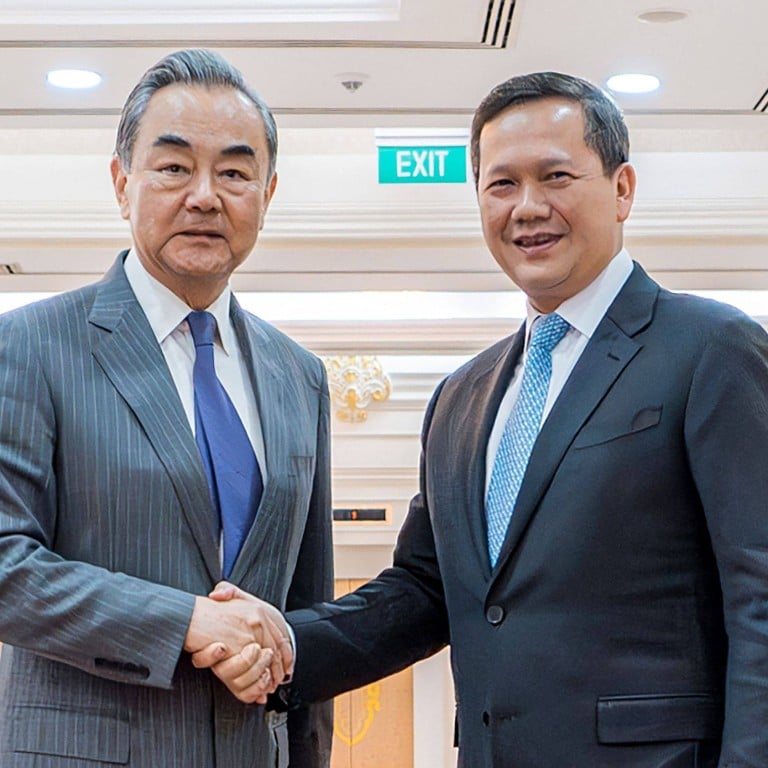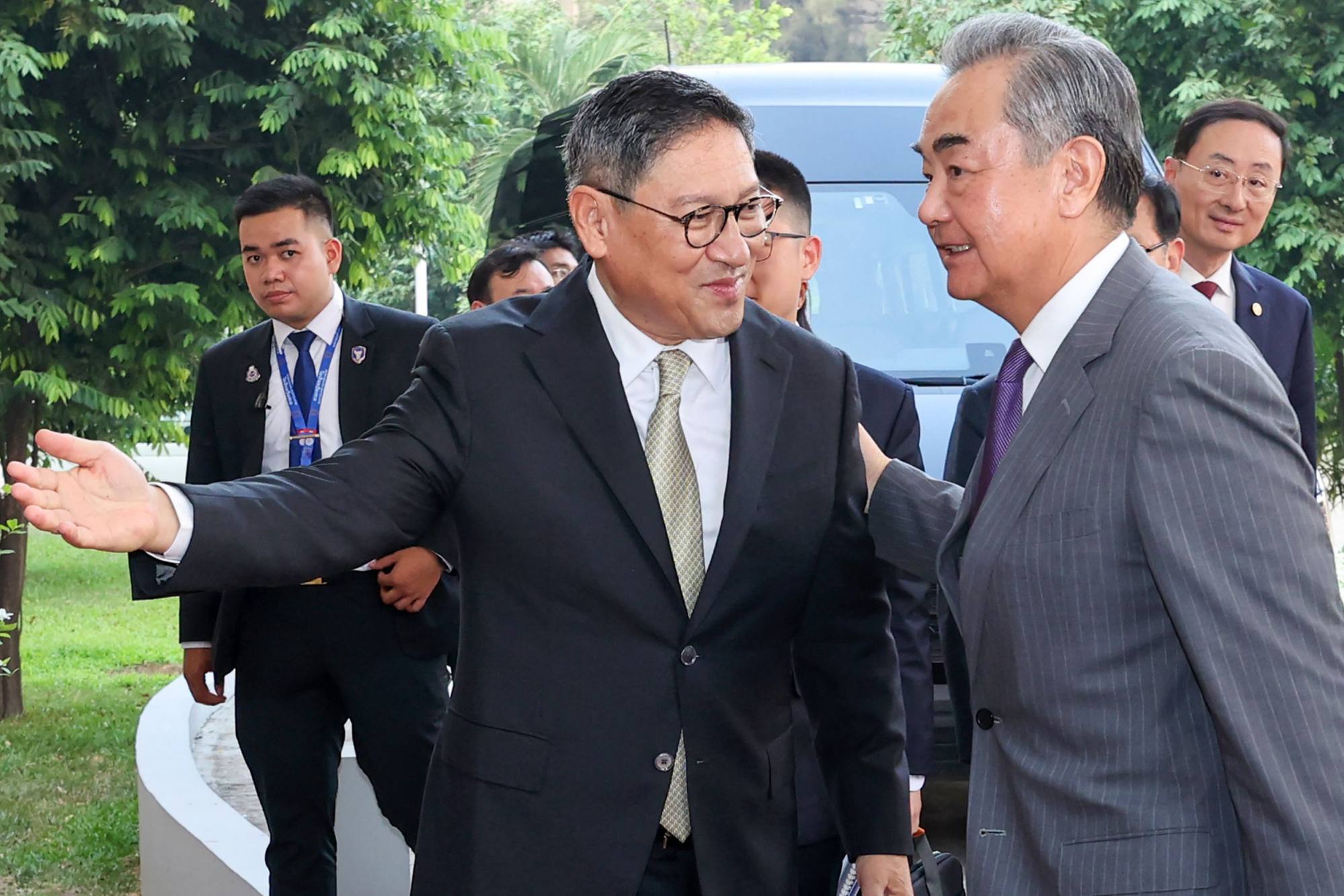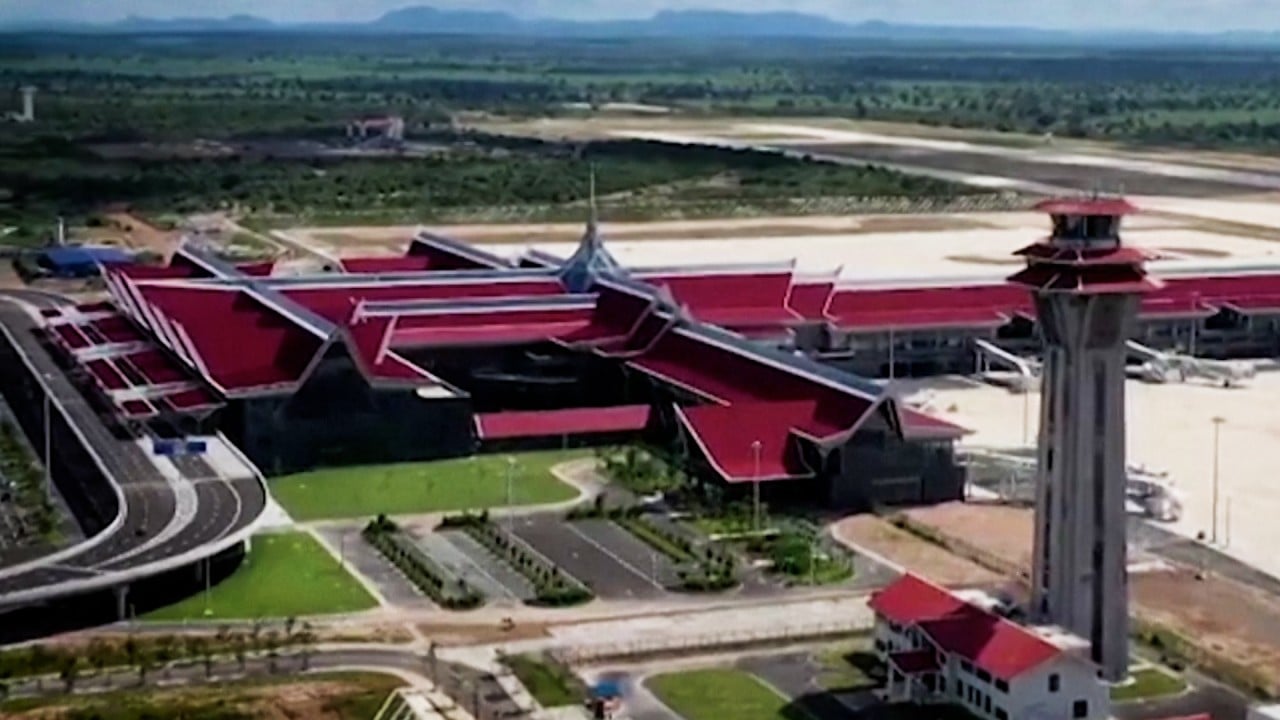
South China Sea: China and Cambodia vow to move quickly to conclude code of conduct amid tension in disputed waterway
- Cambodian Foreign Minister Chenda Sophea Sok tells Chinese counterpart Wang Yi that Phnom Penh opposes ‘troublemaking in the region by extraterritorial forces’
- Wang emphasised the need for continuous crackdowns on ‘cyberscams and human trafficking’ in the region
On Sunday, Wang told Cambodian Foreign Minister Chenda Sophea Sok the two countries should extend cooperation in various fields and create “a favourable external environment” for that cooperation, according to the Chinese foreign ministry’s readout.
Echoing Wang’s remarks, Chenda Sophea Sok said Phnom Penh expected to see more economic projects in Cambodia under the Beijing-led Belt and Road Initiative, and it “opposes troublemaking in the region by extraterritorial forces”, the readout said.
Wang highlighted cooperation in six fields – politics, production capacity, agriculture, energy, security and humanities – and said Beijing and Phnom Penh should “push high-quality development of China-Asean relations”.
Wang also met Prime Minister Hun Manet, former prime minister Hun Sen and King Norodom Sihamoni during the visit.
Before his stop in Cambodia, Wang visited Indonesia and Papua New Guinea, which is an Asean observer state, highlighting China’s emphasis on relationships with Asean countries amid tensions in the South China Sea.

This month, foreign ministers in Vietnam and Laos visited Beijing.
Beijing’s relations with the Philippines have deteriorated as the Asean member has drawn closer to Washington amid the South China Sea disputes.
China’s relations with Cambodia remain among the closest of the Asean countries. The two have no territorial disputes and Phnom Penh largely depends on China’s trade and investment.
China is Cambodia’s biggest trading partner, with US$11.6 billion in trade between the two countries last year, according to Cambodia’s customs.
Cambodia’s largest lender supplies loans to finance the building of airports, roads and other infrastructure projects. Beijing owns 37 per cent of Phnom Penh’s US$10 billion in foreign loans, according to the latest figure by Cambodia’s Public Debt Statistical Bulletin.
In 2021, China’s direct investment in Cambodia was US$470 million, bringing its total investment to nearly US$7 billion, according to China’s Ministry of Commerce – more than a quarter of the country’s GDP that year. The investments have mainly focused on energy and the power grid, and communications under the belt and road programme.
However, some major projects have drawn scepticism, mainly from the United States. Beijing has been helping Cambodia upgrade its Ream Naval Base on the Gulf of Thailand following Phnom Penh’s dismantling of a US-built facility at the same base in 2020.
Washington raised concerns the base could be used as an overseas outpost by the Chinese military, a proposition denied by Cambodia’s defence ministry last year.
According to satellite image analysis by the Asia Maritime Transparency Initiative at the Centre for Strategic and International Studies, two Chinese corvettes have had a “consistent presence” at the China-funded base in southern Cambodia since December 3.
The plan has raised concern from both the US and Vietnam, with both stressing the need for transparency around the US$1.7 billion project.



